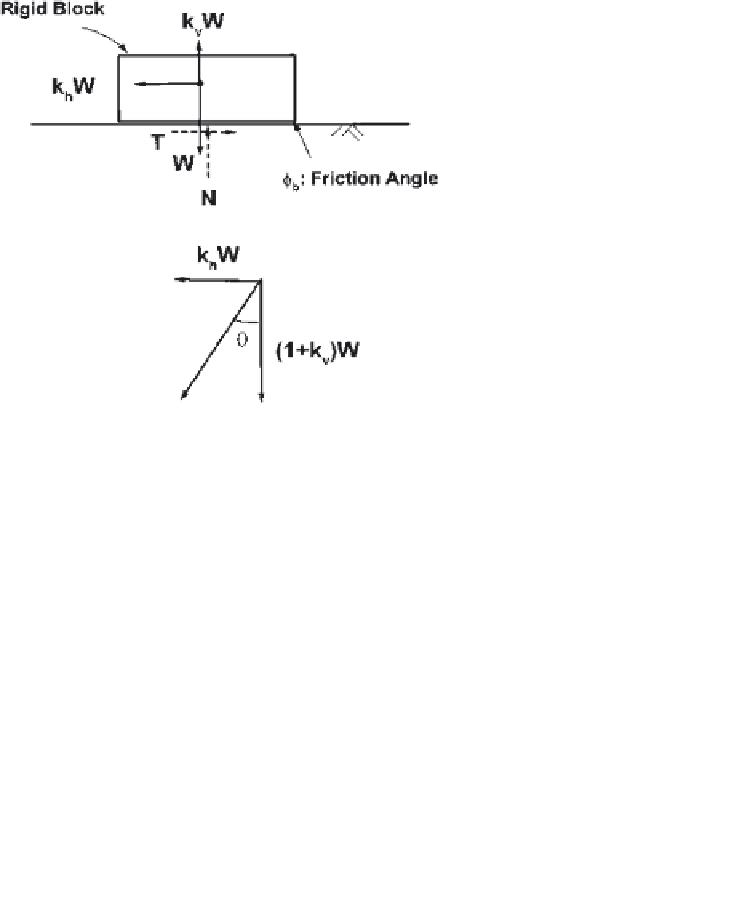Geoscience Reference
In-Depth Information
Figure 1
Rigid block subject to earthquake loading.
where k
h
and k
v
are horizontal and vertical coefficients of acceleration. The
vertical acceleration may act upward or downward considering the most critical
conditions for design. A typical value of horizontal seismic coefficient may be
obtained from the seismic map of
Fig. 2
(e.g., AASHTO, 1983).
In using the sliding block concept for permanent displacement analysis, a
yield or critical acceleration is defined for the soil mass at sliding where the factor
of safety is equal to unity. During seismic excitation, sliding accumulates
whenever this yield value is exceeded. Newmark suggested that yielding and thus
displacement may be neglected for the reverse direction, which has large yield
acceleration. The failure as designated by a factor of safety of unity is
momentary. Thus, displacement should be used as the criterion to evaluate
earthquake performance. The overview here is based on several publications
(Ling et al., 1996, 1997; Ling and Leshchinsky, 1997, 1998; Ling, 2001).
The sliding block concept has been used for practical design of earth dams
(Franklin and Chang, 1977; Makdisi and Seed, 1978; Haynes and Franklin,
1984). The idea of permanent displacement limit has also been used for the
seismic design of retaining walls (Richards and Elms, 1979; Whitman, 1990).
Following the 1994 Kobe earthquake, the methodology has gained wide research
in Japan for designing earth structures against high seismic load (e.g., JGS, 1999).
This is due to the fact that the seismic design of structures is challenged by a
seismic coefficient as large as 0.8 in a Level 2 earthquake (JSCE, 1996). The
conventional methodology of design using merely a factor of safety becomes









Search WWH ::

Custom Search